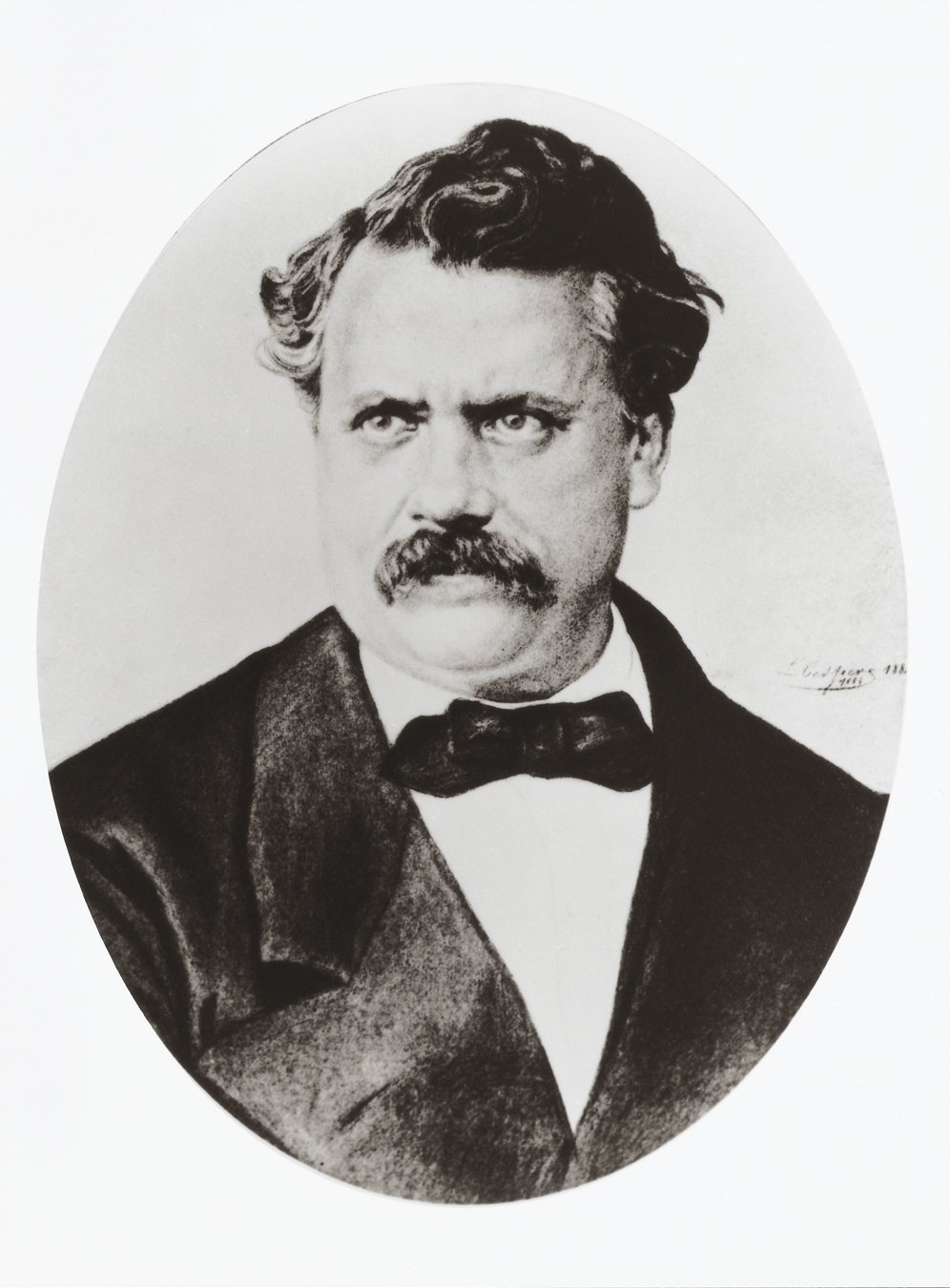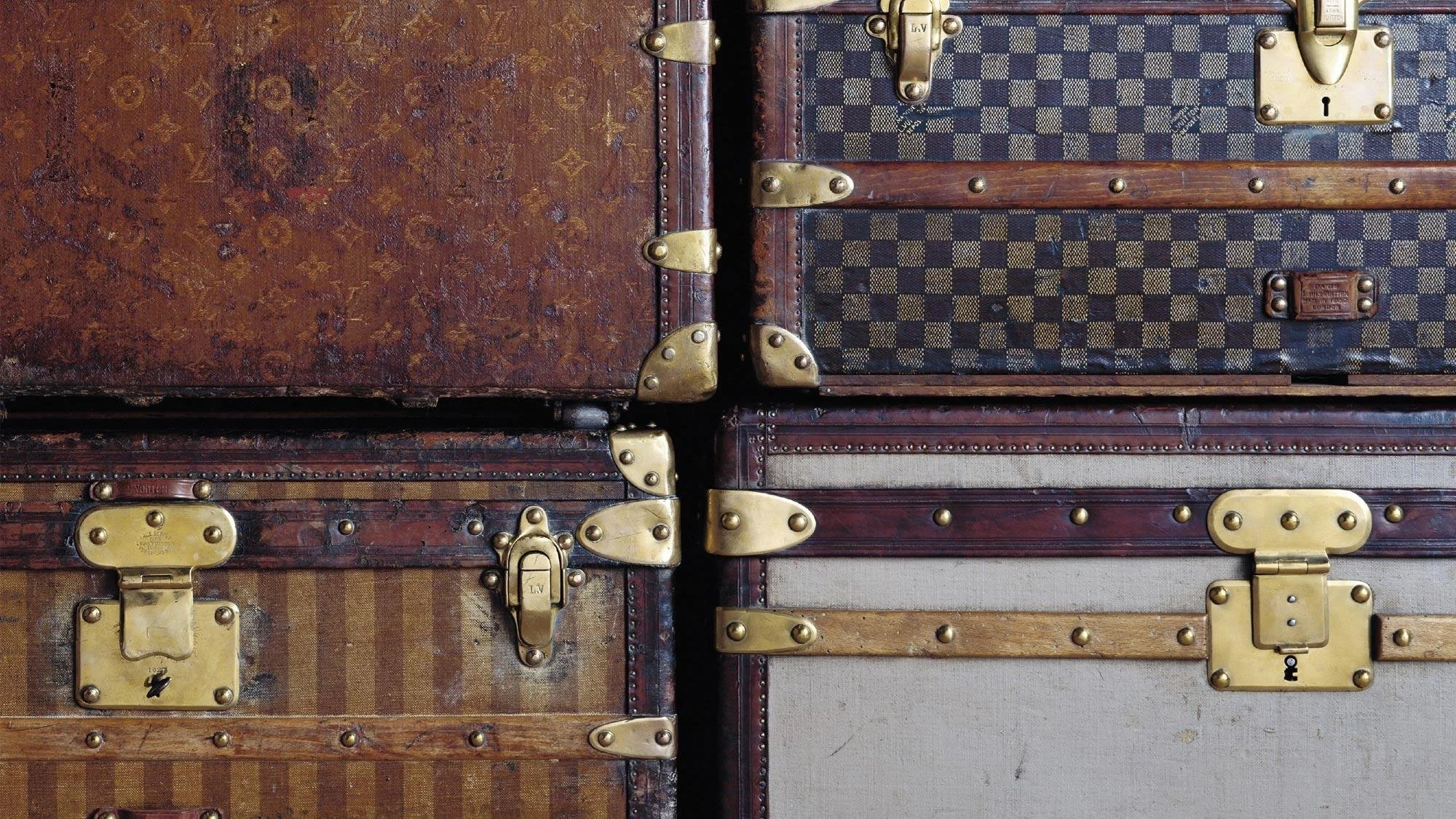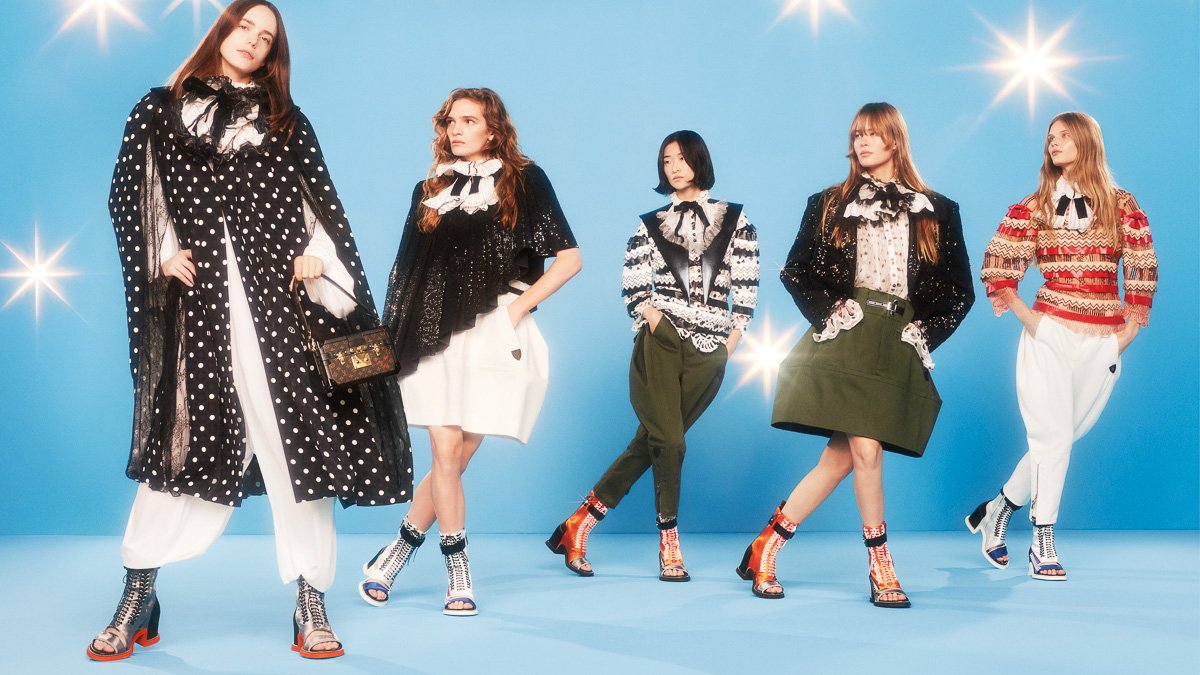Designer Deep Dive: Louis Vuitton
Louis Vuitton has been a leader in the luxury fashion industry for almost two centuries and has quite the storied history. I’ve learned so much over the last couple of weeks as I’ve been doing my research, like how Louis Vuitton got his start, the fact that their bags are both waterproof and fireproof (one of the reasons they are so expensive and retain their value over time), and that the company is currently worth $293 BILLION dollars 🤯 Ready to dive in? Let’s do it! 👏🏻
Starting Out
Louis Vuitton was born in 1821 in the mountainous region of Anchay, France to a working-class family. Vuitton’s father was a farmer and his mother was a milliner (women’s hat maker) and he would learn the traits of perseverance and diligence from them. His mother sadly passed away when he was only 10 years old and his father remarried soon after. It is believed that Vuitton's new stepmother was cruel and harsh, much like the evil stepmother from Cinderella! At just 13 years of age, Vuitton was tired of being antagonized by his stepmother and bored with the quiet life of Anchay, so he ran away (literally walked the 292 miles on foot) to the bustling city of Paris in hopes of a brighter future. It took him 2 years to get there, taking odd jobs along the way to feed himself and taking shelter wherever he could.
When he finally arrived in Paris at the age of 16, he landed a job as an apprentice at an esteemed box-maker and packer named Monsieur Marechal. What is a box-maker you might ask? They custom-made all boxes to fit the goods they stored and personally loaded and unloaded the boxes, which at the time was a highly respectable job, and Vuitton was making a name for himself within his new craft. It wasn’t until 1852 (17 years later) that Vuitton’s career as a box-maker would reach new heights as a result of Napoleon III becoming the Emperor of France. Napoleon III’s wife hired Vuitton as her personal box-maker and packer and tasked him with "packing the most beautiful clothes in an exquisite way." It was this moment that changed Vuitton’s career and introduced him to an elite clientele that would seek out his services for years to come. His life changed personally as well just a few years later when he met and married his wife, Clemence-Emilie Parriaux. That same year he stopped working for Monsieur Marechal and opened his own box-making shop on Rue Neuve des Capucines, right near the Lourve Museum. The sign outside the shop read: "Securely packs the most fragile objects. Specializing in packing fashions."
Four years later, Vuitton debuted a rectangular trunk made of canvas, compared to his previous dome-shaped trunks that were made of leather. The canvas was more durable and water-resistant, but the biggest selling point of this new trunk design was that it was more suitable for travel via trains and ship due to it’s ability to be easily stacked. It’s been said that Vuitton’s creation of this trunk was the birth of modern luggage as we know it today! Around this time, travel became more popular and by 1859 he relocated his workshop just outside Paris where he had more room to dream up ideas and create his trunks. His business was doing incredibly well given that he had royalty as clients, but his business came to a halt in 1870 with the breakout of the Franco-Prussian War and the siege of Paris. When the siege ended in 1871 he returned to his workshop only to find that it had been destroyed, with half of his tools and equipment stolen. He didn’t let that stop him though! Instead of letting defeat overcome him, he opened a new shop within the new heart of Paris with the intent of focusing more on luxury and appealing to a high-end clientele. It was at this shop location that he debuted a new trunk design featuring beige and red striped canvas in 1876 and later on in 1888 he developed the still well-known Damier print. His innovative genes also passed down to his son George, who invented and patented an ingenious locking system that made it impossible to pick the lock of their trunks, which is still used today!
Vuitton passed away in 1892 at the age of 70, and it was then that his only son, Georges, took over and carried on the family legacy. In memory for his late father, Georges created the infamous LV monogram in 1896 which was patterned with LVs, quatrefoils, and flowers. This signature pattern caught the eye of many elite clientele, but most importantly, fashion icon Gabrielle Chanel. In 1925 she special ordered a smaller size of the Alma Voyage bag which she intended for personal, everyday use, and in the 1930s allowed the company to put it into production so that others could buy it too. Right around this time, the brand introduced the Keepall, the Speedy, and the Noe (which was designed to hold up to 5 champagne bottles - and still can!). You may recognize the Speedy bag, being that it’s one of the brand’s most iconic designs thanks to Audrey Hepburn! She approached Louis Vuitton in the late 1950’s asking for an everyday size of the Speedy, which at the time was the size of a duffel bag. It was then that the Speedy 25 was born, which is the smallest size that this bag comes in and is arguably the most popular.
Georges passed away in 1936 leaving his son, Gaston-Louis Vuitton, to take over the family business. It was during his 50-year tenure that he introduced leather into their collections in the mid 1980’s. When Gaston-Louis passed away, his son-in-law, Henry Racamier, took over management of the company which resulted in expanding their retail locations around the world. It was also under his leadership that Louis Vuitton would partner with the leading manufacturers of champagne and cognac, Moet et Chandon and Hennessy, respectively, which is how the LVMH conglomerate was established in 1987.
The Marc Jacobs Years
One of the iconic runway shows during Marc Jacobs’ tenure as creative director; this graffiti style bag collection was one of their most popular.
1997 was a pivotal year for Louis Vuitton when Marc Jacobs signed on as the first ever creative director of the house and helped expand the brand on a global scale. He designed the first ready-to-wear collection one year later which included canvas trench coats, skirts, and jackets stamped with the LV monogram. During this early years he partnered with other designers to breathe new life into the fashion house, and one of the most successful collaborations was in 2003 with Japanese visual artist Takashi Murakami to produce the Eye Love Monogram Collection. Murakami replaced the traditionally beige and brown colors of the Monogram Canvas with a multi-colored palette. Once you see a photo of this collection you’ll be instantly transported back in time when these bags could be seen on almost every celebrity it-girl: Paris Hilton, Lindsay Lohan, Jessica Simpson...this list goes on! The collection was so popular that it was only phased out of stores in the summer of 2015, under the stewardship of then creative director Nicolas Ghesquière.
The Louis Vuitton ‘Eye Love’ collection that was all the rage in the early 2000s.
In 2004 he introduced the first menswear collection which was a huge success. Throughout his tenure has creative director until 2014 when he stepped down to focus on his own brand, he always pushed the envelope and was constantly exploring new themes or reimagining silhouettes from previous decades like the 60’s and 80’s. Marc Jacobs had a profound impact on Louis Vuitton during his 16 years there, reshaping the brand to attract a younger audience and share it’s storied history with the world.
LV Today
Nicholas Ghesquière is hired to replace Marc Jacobs as artistic director of women’s collections, showing his first collection during Paris Fashion Week in March 2014. He used his prior experience at Balenciaga to modernize Louis Vuitton’s aesthetic and push boundaries. In 2018, Virgil Abloh became creative director of the menswear line and instilled some of the streetwear spirit of his own brand, Off-White, in his first collection which was shown at the Palais-Royal during Paris Men’s Fashion Week. Virgil has diagnosed with a rare cancer called cardiac angiosarcoma in 2019, which he battled privately with his family and ultimately passed away in late 2021. His impact on the brand was felt by so many across the industry and Louis Vuitton paid tribute to him in it’s window displays around the world.
In 2019 Louis Vuitton was named by Forbes as the world’s most valuable luxury brand, worth $39.3 billion 🤯 and to think it all started because of a 13-year-old boy’s determination to leave home and walk 300 miles on foot to Paris. I’ve learned so much after digging into the history of Louis Vuitton and have a newfound respect for this brand that has stood the test of time!
Sources: Biography | Rebag | Weekly Lux Drop





